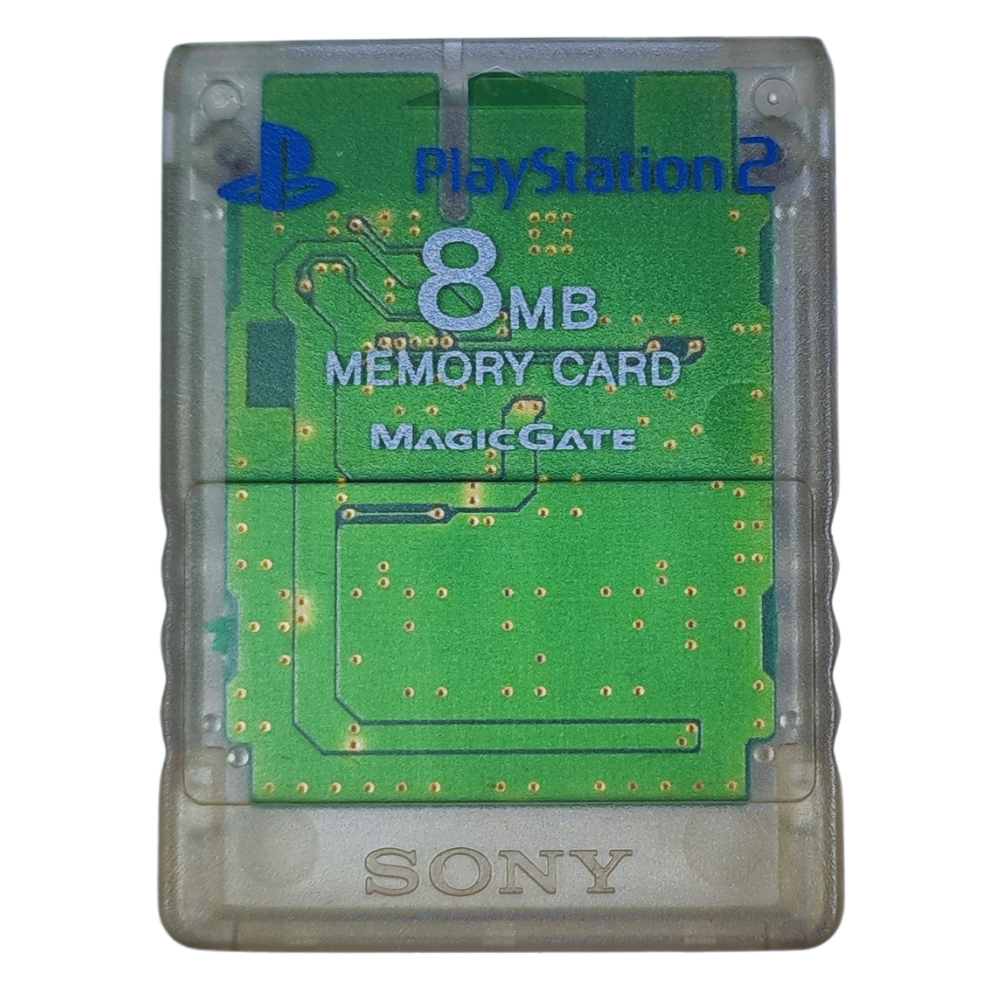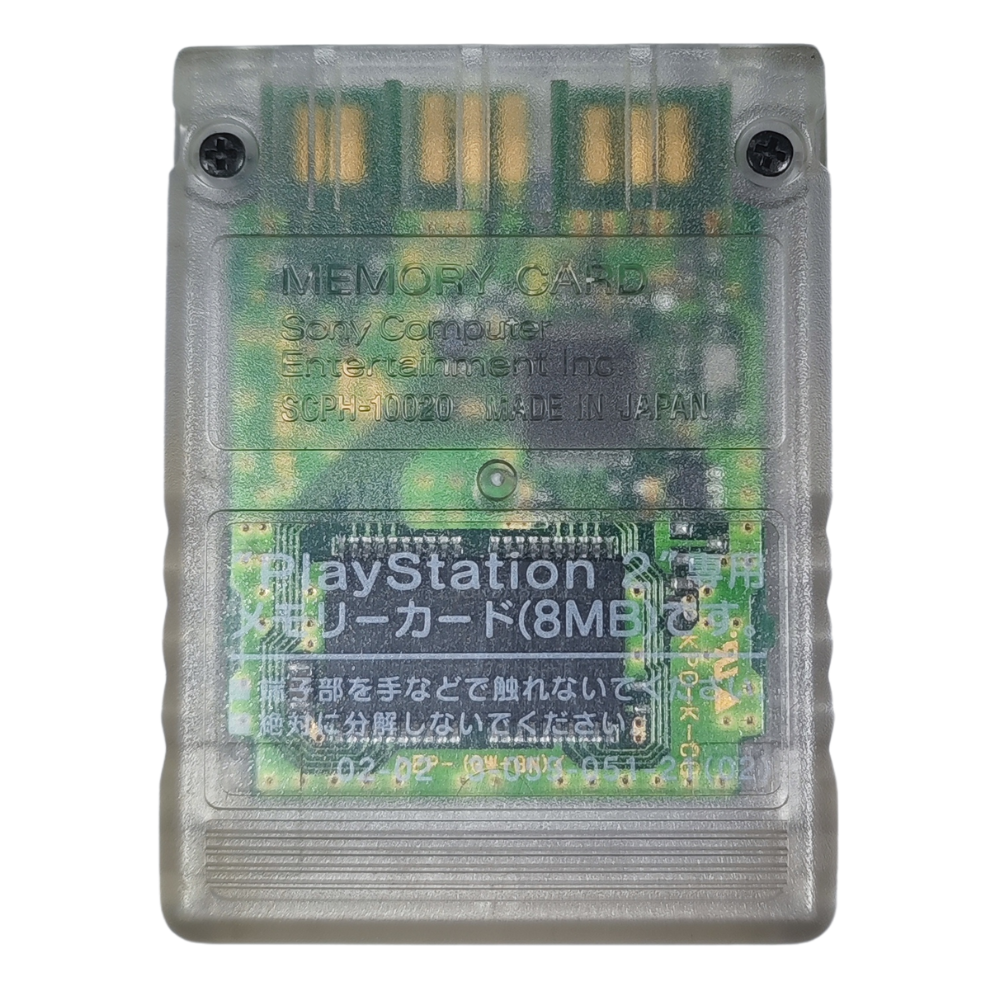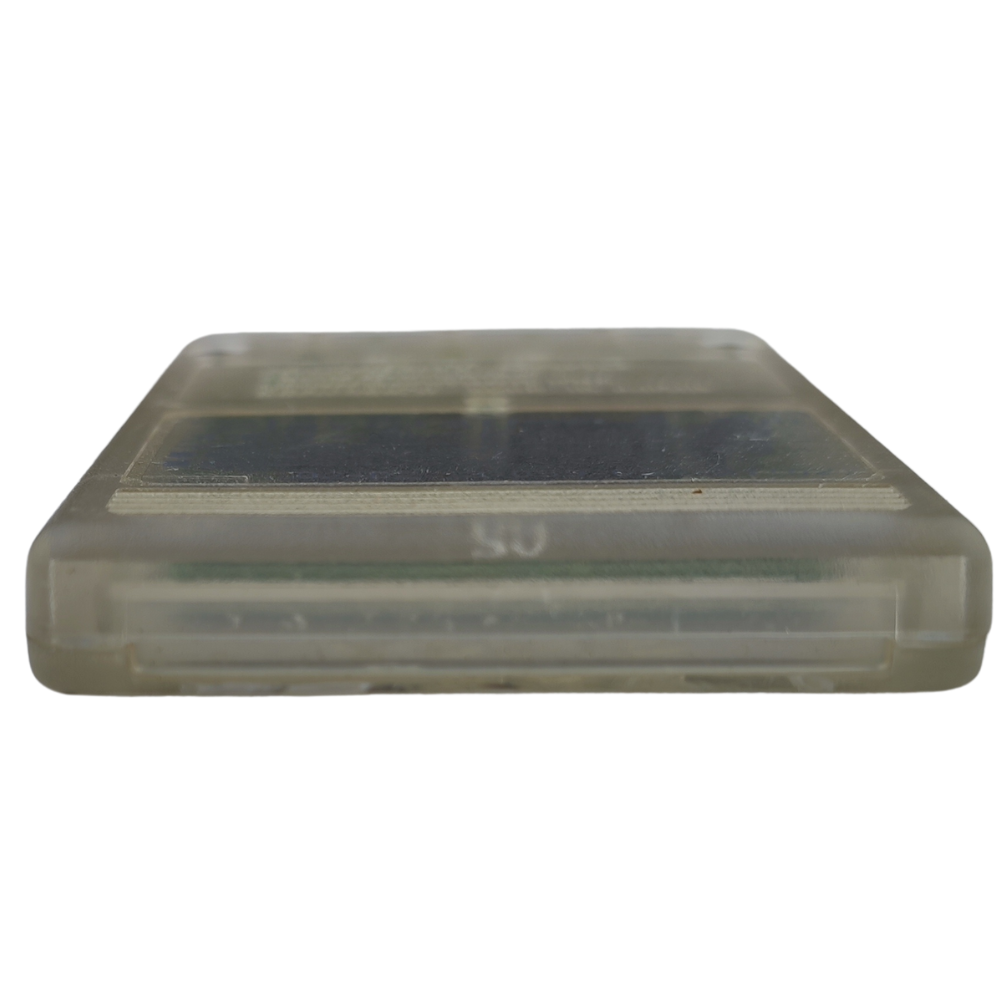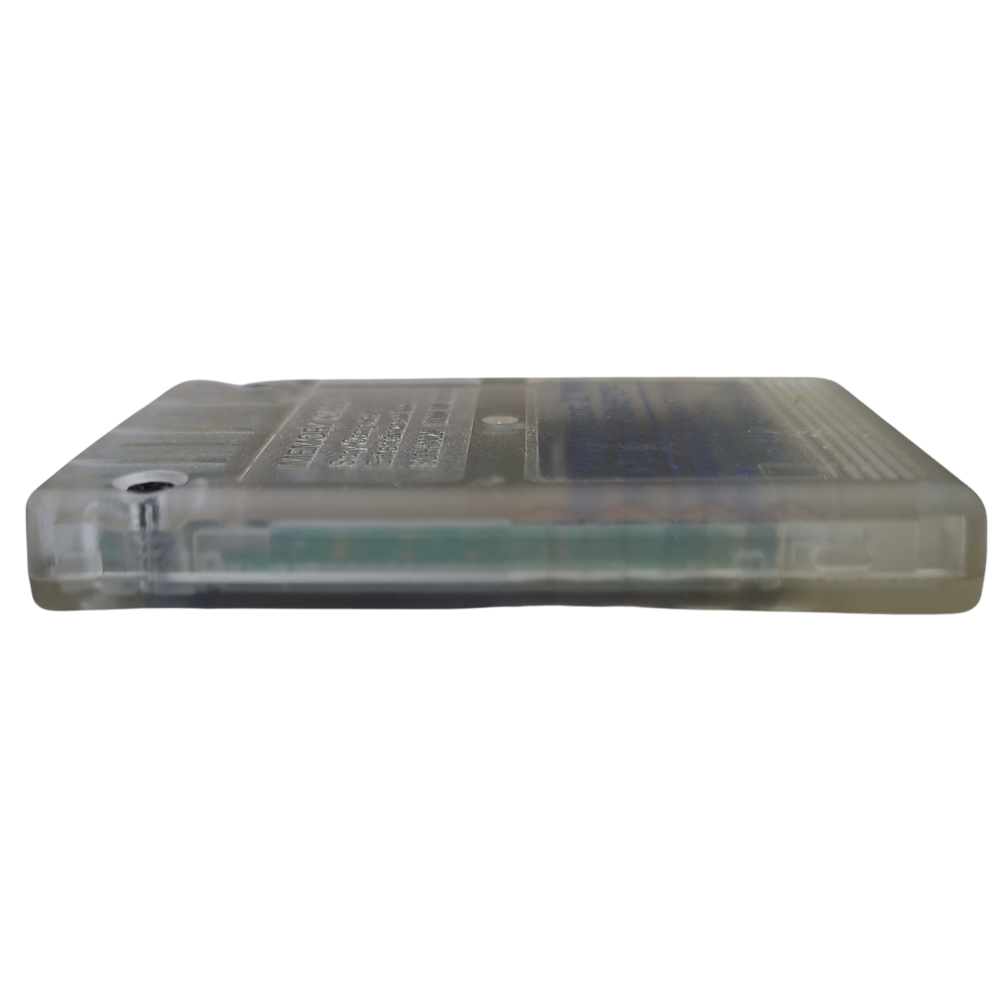













Genuine Official Memory Card Stick Sony PS2 PlayStation 2 Clear 8MB SCPH-10020
Regular price
$24.99
Secure checkout
Friendly support
Hassle-free returns
0 sales
The PlayStation 2 (PS2), released in 2000, brought many advancements in gaming technology, including its method for game data storage. Central to this was the MagicGate memory card, a proprietary memory card developed by Sony. This small device, essential for saving progress in PS2 games, used the MagicGate encryption technology to protect copyrighted data, providing both security and efficiency in game storage. The PS2 memory card played a critical role in the gaming experience and in Sony’s overall approach to digital rights management (DRM).
Design and Features
The MagicGate PS2 memory card had several notable features that set it apart from memory cards of previous generations:
- Storage Capacity: The standard MagicGate PS2 memory card had an 8 MB capacity, a significant increase over the original PlayStation memory card’s 1 MB. Though small by today’s standards, this was sufficient for storing game save data, which typically required only a few hundred kilobytes per save. As games became more complex, some players needed multiple cards to store additional saves.
- MagicGate Technology: What distinguished the PS2 memory card from earlier ones was the implementation of MagicGate, a proprietary encryption and digital rights management (DRM) technology developed by Sony. This system ensured that all data transferred to and from the card was encrypted, preventing unauthorized copying of game saves and other media. MagicGate was part of Sony’s broader effort to protect copyrighted content on its devices.
- Speed: The memory card was designed for fast data transfer speeds. This made saving and loading game data nearly instantaneous compared to previous generations, contributing to a smoother gaming experience.
- Durability and Design: The PS2 memory card was compact and sturdy, designed to be easily inserted and removed from the PS2 console’s memory card slots. Its robust construction meant that it could withstand repeated use without easily wearing out, important for an accessory that gamers relied on to preserve their progress.
Historical Impact
- Essential for Game Saves: Unlike modern consoles with built-in storage, the PS2 did not have an internal hard drive for saving game data (except for a limited-use accessory available later). As a result, the MagicGate memory card was indispensable for storing game progress. Without it, players could not save or load their progress in most games, making it a vital accessory for any PS2 owner.
- MagicGate DRM and Data Security: Sony’s implementation of MagicGate technology on the memory card was part of a broader effort to prevent piracy and unauthorized copying of digital content. This technology helped protect copyrighted material and ensured that game saves could not be easily duplicated or transferred to non-authorized devices. While this secured game data, it also limited compatibility with third-party memory cards that did not feature the MagicGate encryption.
- Precursor to Larger Storage Solutions: The 8 MB capacity of the PS2 memory card, though sufficient at the console’s launch, eventually became limiting as games grew more complex and required more save data. This limitation led to the introduction of third-party memory cards with larger capacities and set the stage for future consoles to incorporate internal storage solutions or cloud saves. However, the memory card represented the last generation where external memory cards were mandatory for saving game data.
- Customization and Collectibility: Over the years, Sony and third-party manufacturers produced a variety of PS2 memory cards with different colors and designs, some featuring iconic characters or special editions tied to specific games. This turned the memory cards into collectible items for many gamers, adding a layer of personal customization to their PS2 setups.
Importance in Gaming
- Enabling Long Play Sessions and Game Progression: The MagicGate memory card allowed players to save their game progress, enabling them to return to games without losing their advancements. This was especially important for PS2 games, many of which were large and required extensive playtime to complete. Without the memory card, playing PS2 games would have been a far more frustrating experience, as gamers would be unable to pick up where they left off.
- Facilitating Multiplayer and Game Sharing: Memory cards also allowed for easy game data sharing between friends. Players could bring their memory cards to a friend’s house and load their save data on another PS2 console, making multiplayer experiences more flexible and enjoyable.
- Shaping Game Design: The existence of the memory card influenced how developers designed save systems. Games had to be optimized to store essential data within the 8 MB limit, forcing efficient use of memory. Developers became creative in how they handled game saves, with many offering multiple save slots or innovative data compression techniques to fit within the card's constraints.
- Nostalgia and Legacy: For many gamers, the PS2 memory card evokes a strong sense of nostalgia. The familiar process of managing save data, moving files around, and even occasionally losing data due to corruption is an iconic part of the PS2 era. Though memory cards have since been replaced by internal storage and cloud saving, the PS2 memory card remains a cherished relic of early 2000s gaming.
Overview
The MagicGate PS2 memory card was a small yet indispensable part of the PlayStation 2 experience. It not only allowed players to save their game progress but also introduced Sony’s MagicGate technology to safeguard digital content. The memory card helped define the gaming experience of the PS2 era, bridging the gap between cartridge-based saves and the internal storage solutions seen in modern consoles. Its importance in gaming history, both for its practical role and its nostalgic value, cannot be overstated.







